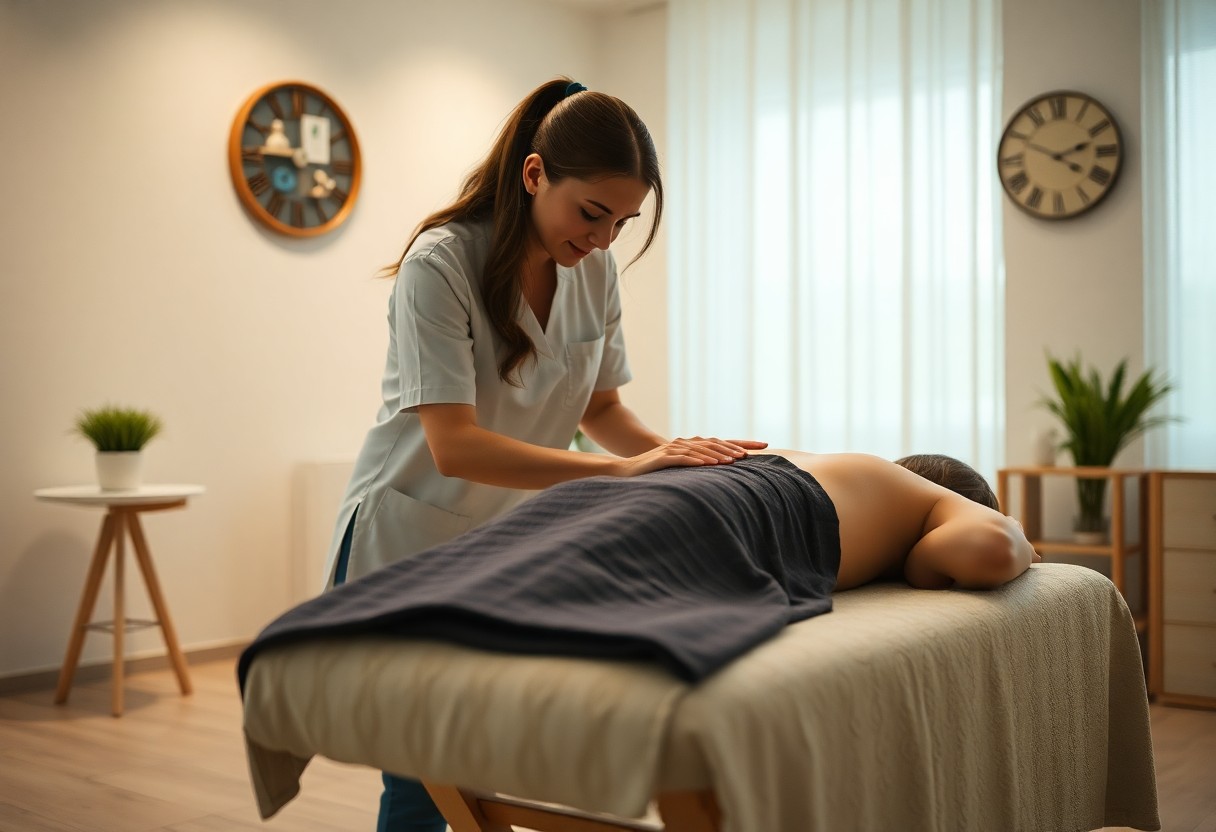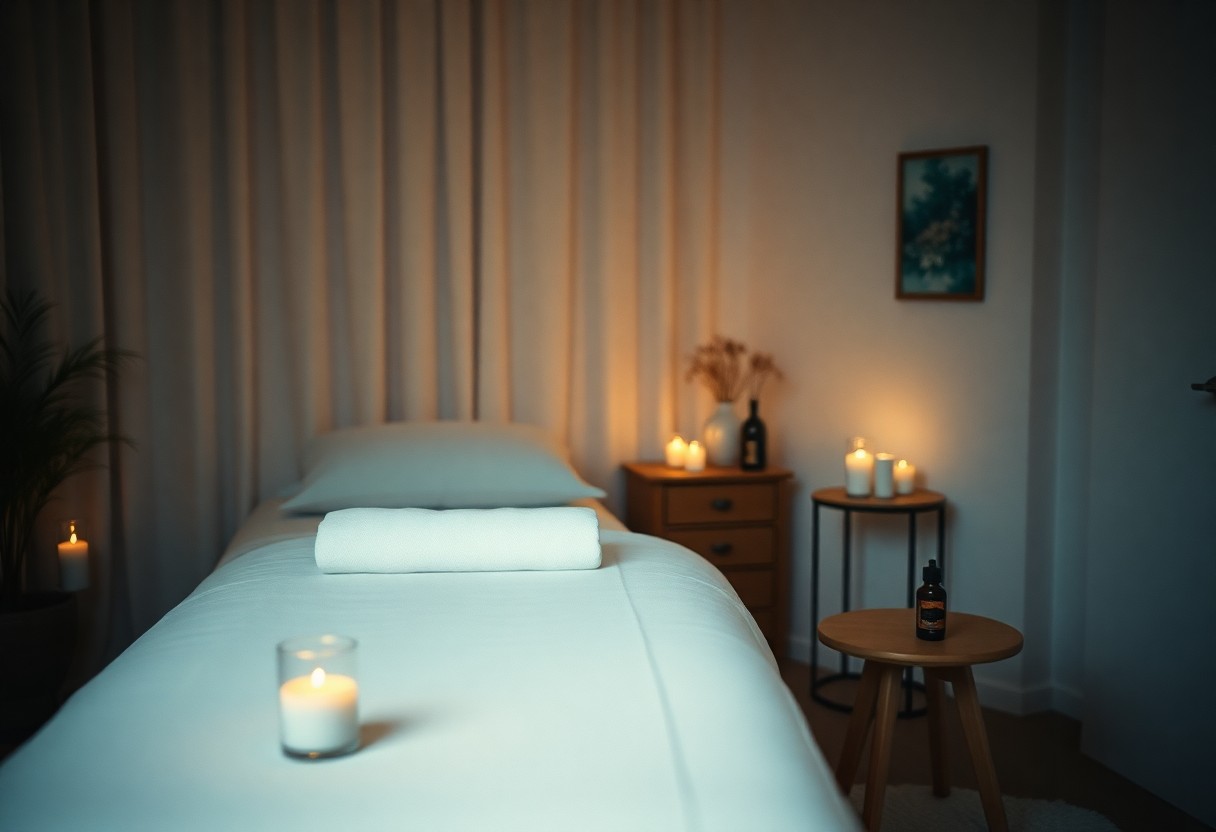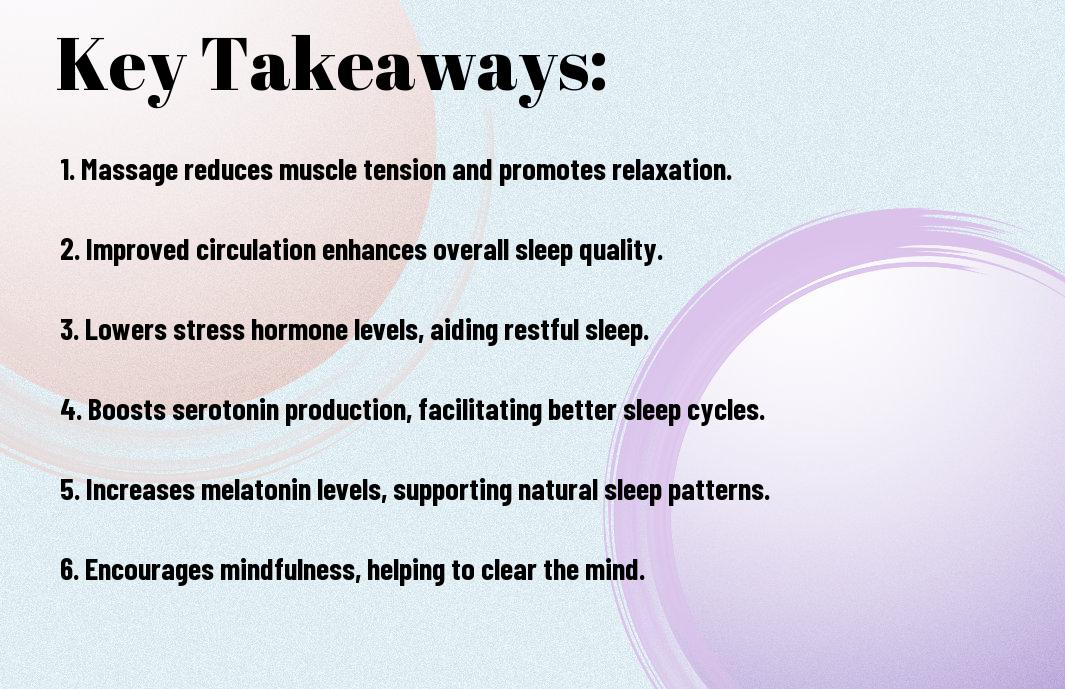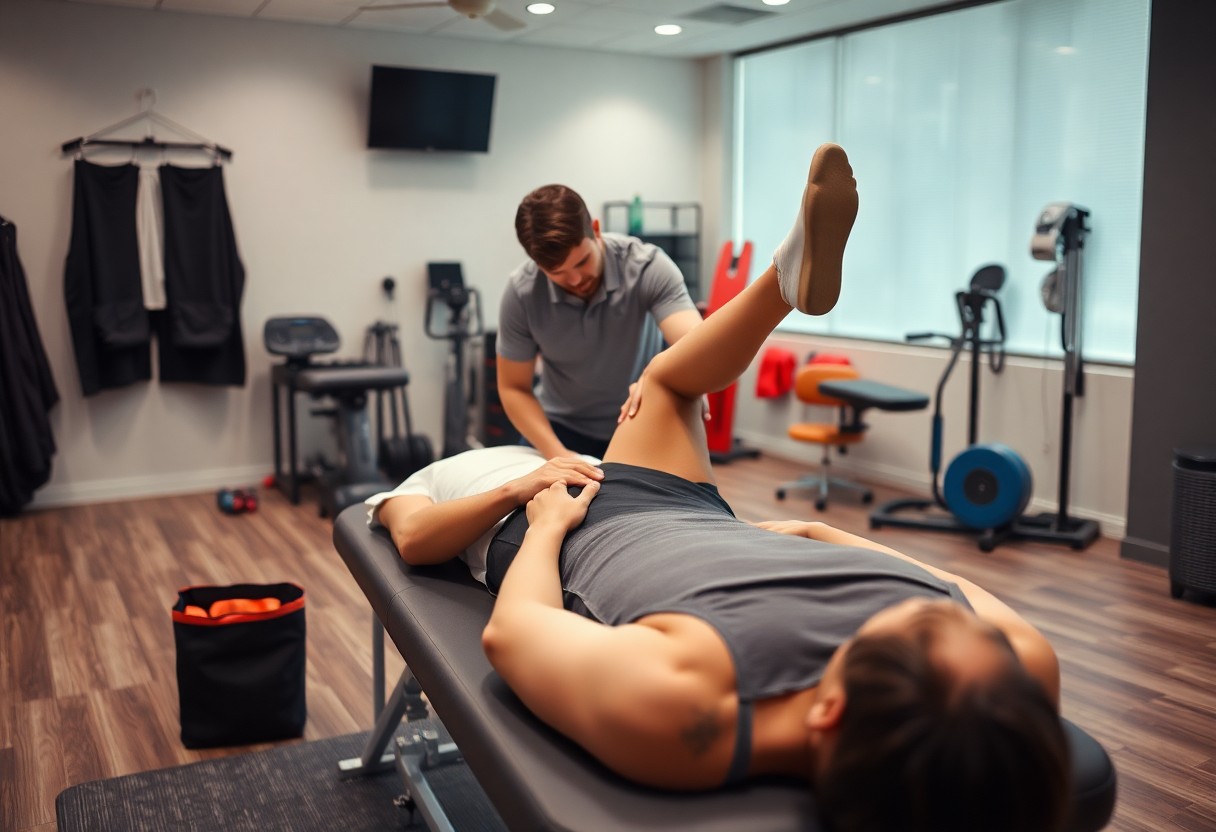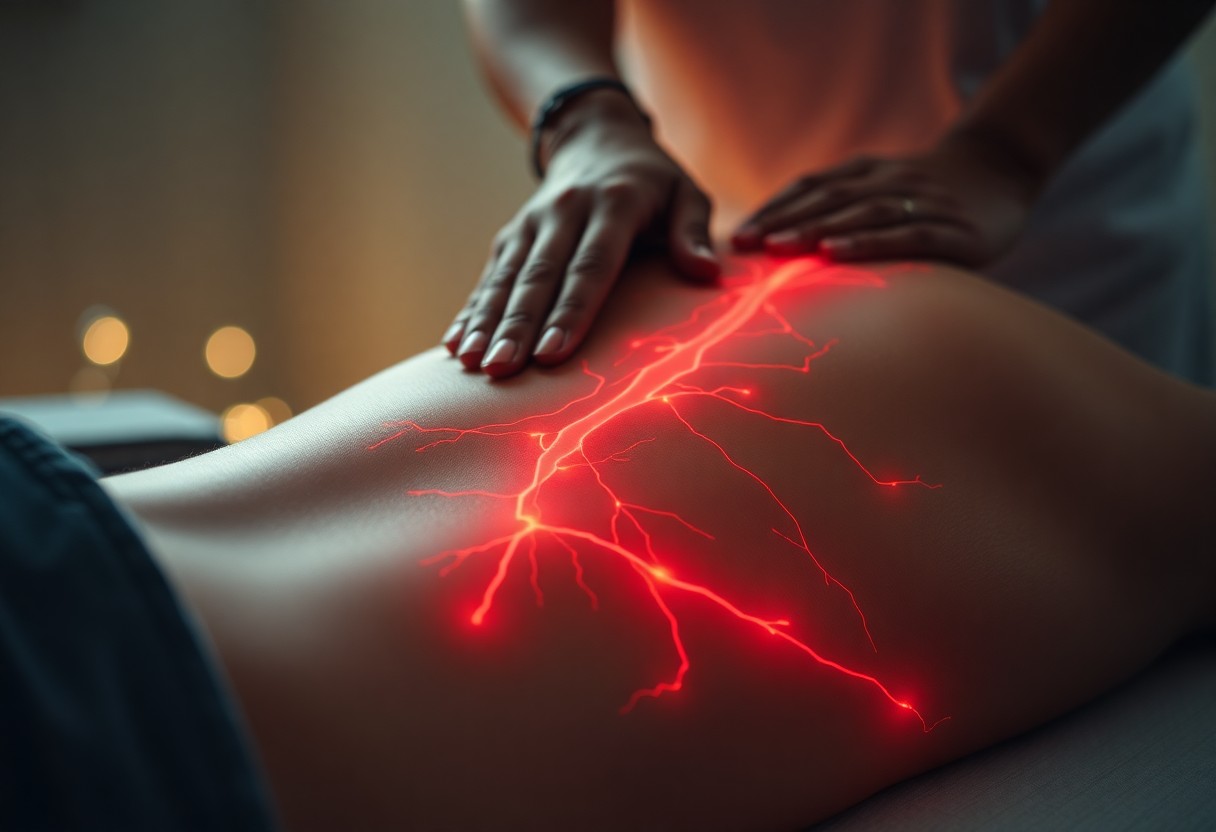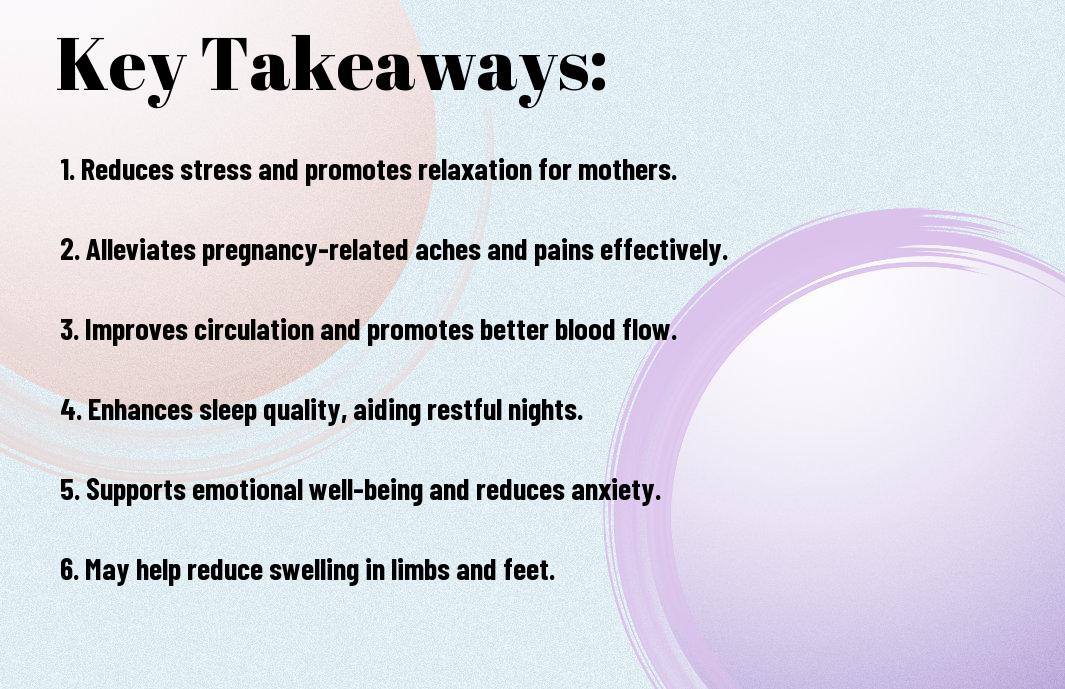There’s a growing interest in exploring various therapies for chronic pain management, and massage therapy is among the most popular options. If you suffer from ongoing pain, you may wonder whether massage can provide relief and improve your quality of life. In this post, you’ll discover how massage therapy not only alleviates discomfort but also promotes relaxation and better physical function, potentially transforming your approach to managing pain. Let’s investigate the benefits, techniques, and evidence supporting the use of massage as an effective tool in your chronic pain management arsenal.
Key Takeaways:
- Relaxation: Massage therapy can promote relaxation, reducing muscle tension and enhancing overall well-being, which may alleviate chronic pain symptoms.
- Increased Blood Flow: Massage techniques improve circulation, delivering oxygen and nutrients to tissues, potentially aiding in the healing process and reducing pain levels.
- Endorphin Release: Receiving a massage can trigger the release of endorphins, the body’s natural painkillers, which can help offset chronic pain sensations.
- Enhanced Range of Motion: Regular massage may improve flexibility and range of motion in affected areas, making it easier to manage day-to-day activities.
- Holistic Approach: Complementing medical treatments, massage therapy can offer a holistic approach to managing chronic pain by addressing both physical and emotional aspects of discomfort.
Understanding Chronic Pain
For many people, understanding chronic pain is necessary to managing it effectively. Chronic pain is defined as persistent pain that lasts longer than three months, often significantly impacting your quality of life. Unlike acute pain, which serves as a warning for injury or illness, chronic pain may persist even after the initial cause has healed. Recognizing its nature can help inform treatment strategies and lifestyle adjustments for improved well-being.
Definition and Types of Chronic Pain
With the complex nature of chronic pain, several types are recognized, including but not limited to:
- Neuropathic Pain — caused by nerve damage
- Musculoskeletal Pain — affecting muscles, ligaments, and joints
- Inflammatory Pain — due to inflammation
- Visceral Pain — originating from internal organs
- Cancer Pain — related to cancer and its treatments
Any of these types can significantly alter your daily experiences and challenges.
| Type | Description |
| Neuropathic Pain | Caused by nerve injury or dysfunction |
| Musculoskeletal Pain | Affects muscles, tendons, and joints |
| Inflammatory Pain | Linked to inflammatory conditions |
| Visceral Pain | Stemming from internal organs |
| Cancer Pain | Associated with cancer growth or treatment |
Common Causes and Risk Factors
Around 20% of adults experience chronic pain, which can arise from various causes and risk factors. These may include genetics, past injuries, and certain medical conditions that predispose you to persistent pain. Identifying these factors can assist in tailoring your pain management approach.
- Age — Older adults are more likely to experience chronic pain.
- Previous Injuries — Past trauma can lead to ongoing pain.
- Underlying Health Conditions — Diseases like arthritis can contribute.
- Occupational Hazards — Jobs requiring repetitive movements may increase risk.
- Stress and Mental Health Issues — These can exacerbate pain perceptions.
After understanding these causes, you can better navigate your pain management strategies.
To further grasp the implications of these common causes and risk factors, consider how lifestyle choices may also play a significant role. Smoking, lack of physical activity, and poor diet can contribute to pain conditions. Besides, mental health disorders like anxiety and depression often coexist with chronic pain, complicating your pain experience. Being aware of these aspects is vital in addressing your pain management plan effectively.
- Smoking — Linked to increased pain sensitivity.
- Lack of Exercise — Can worsen muscle and joint problems.
- Poor Diet — Affects overall health and inflammatory responses.
- Chronic Stress — Heightens pain perception and discomfort.
- Sleep Disorders — Can contribute to increased pain levels.
After evaluating your lifestyle, you might identify areas to improve for better pain management outcomes.
The Role of Massage Therapy
It is increasingly recognized that massage therapy plays a significant role in managing chronic pain. By targeting specific areas of discomfort, massage can help enhance circulation, promote relaxation, and reduce muscle tension, making it an effective option for pain relief. Furthermore, by fostering a mind-body connection, massage therapy can improve your overall sense of well-being, empowering you to cope better with your pain.
What is Massage Therapy?
For those unfamiliar, massage therapy involves manipulating your body’s soft tissues, including muscles, tendons, and ligaments, to alleviate pain and improve function. Through various techniques, massage therapists use their hands to apply pressure to specific areas, promoting relaxation and healing. This holistic approach can be tailored to your individual needs, addressing both physical and emotional aspects of chronic pain.
Types of Massage Techniques Relevant for Chronic Pain
On your journey to find relief from chronic pain, several massage techniques can prove beneficial. Here are some methods that are particularly relevant:
| Massage Technique | Description |
|---|---|
| Swedish Massage | Gentle, full-body method using long strokes and kneading. |
| Deep Tissue Massage | Targets deeper muscle layers to relieve tension and pain. |
| Trigger Point Therapy | Focuses on specific knots in muscles for localized relief. |
| Myofascial Release | Gently stretches and manipulates connective tissues. |
| Shiatsu | Japanese technique applying pressure to specific points. |
Any of these techniques may help you manage your pain more effectively, so it’s worth consulting with a qualified therapist to determine the best fit for your needs.
The exploration of massage techniques relevant to chronic pain management can be eye-opening. Each method serves a unique purpose, and understanding these differences can guide you toward making informed decisions for your treatment. Here’s a breakdown of the key techniques:
| Technique | Benefits |
|---|---|
| Swedish Massage | Enhances relaxation and blood flow. |
| Deep Tissue Massage | Alleviates chronic muscle tension. |
| Trigger Point Therapy | Releases tight areas that refer pain. |
| Myofascial Release | Increases flexibility by easing restrictions. |
| Shiatsu | Addresses energy flow and promotes holistic healing. |
Any of these massage techniques can greatly benefit your chronic pain management strategy, allowing you to feel more empowered in your journey toward relief.
Mechanisms of Pain Relief Through Massage
All pain management strategies aim to improve your quality of life, and massage therapy can be particularly effective. By manipulating your muscles and soft tissues, massage stimulates various physiological responses that contribute to pain relief. You may experience increased blood circulation, reduced muscle tension, and enhanced flexibility, all of which play a vital role in alleviating chronic pain.
Physiological Effects on Muscles and Tissue
Through targeted pressure and stretching, massage influences your muscles and connective tissues. This process improves circulation, helping to flush out metabolic waste and deliver imperative nutrients. Furthermore, massage reduces muscle tension and triggers the release of endorphins, which serve as natural pain relievers. As a result, the overall condition of your muscles and tissues improves, contributing to pain reduction.
Psychological Benefits and Pain Perception
An often-overlooked aspect of chronic pain is how psychological factors influence your perception of pain. Massage can help reduce anxiety and stress, creating a more relaxed state, which can diminish your overall pain experience. By calming your mind, you allow your body to cope better with discomfort.
Indeed, your mental state can significantly impact how you interpret pain sensors in your body. When you are relaxed and stress-free, your sensitivity to pain may decrease, making it easier for you to manage chronic pain. By creating a soothing environment during your massage sessions, you not only foster physical relaxation but also promote emotional well-being, ultimately contributing to an improved pain experience. Engaging in regular massage therapy can cultivate these psychological benefits, empowering you to face your chronic pain with greater resilience.
Research Evidence on Massage for Chronic Pain
After examining existing literature, you will find that numerous studies support the use of massage therapy for chronic pain management. Evidence suggests that massage can provide relief from conditions such as fibromyalgia, arthritis, and lower back pain. The mechanisms behind its effectiveness include improved circulation, reduced muscle tension, and enhanced relaxation, all of which can contribute to a decrease in pain perception.
Clinical Studies and Findings
After reviewing various clinical studies, you may notice consistent findings indicating that massage therapy can lead to significant reductions in pain levels and improvements in overall quality of life for individuals suffering from chronic pain. Many trials have documented positive outcomes, showing that regular sessions can enhance physical function and promote emotional well-being, highlighting its role as a complementary treatment option.
Limitations and Areas for Further Research
Limitations in current research often revolve around small sample sizes and short duration of studies. As you assess the findings, you should also note the diversity of massage techniques used, which complicates the establishment of standardized protocols. More comprehensive, large-scale studies are needed to solidify the evidence base and explore the long-term benefits of massage therapy for chronic pain management.
Evidence indicates that while massage therapy shows promise, there are still gaps in knowledge that need to be addressed. Further studies should aim to explore different types of massage, frequency of treatment, and specific populations affected by chronic pain. Additionally, understanding how massage interacts with other pain management interventions could enhance holistic treatment approaches, ultimately improving your pain management strategy.
Practical Considerations for Massage Therapy
Many individuals seeking relief from chronic pain may benefit from understanding the practical aspects of massage therapy. Consider your specific pain condition, preferences for massage types, and frequency of sessions. Additionally, be mindful of scheduling appointments based on your pain levels to ensure maximum comfort and effectiveness. Communicating openly with your therapist about your needs and experiences can foster a more productive treatment experience, ultimately guiding you towards a suitable approach to integrating massage into your overall pain management strategy.
Choosing a Qualified Massage Therapist
Massage therapy is most effective when performed by a qualified professional. Ensure that your therapist is licensed and has experience treating individuals with chronic pain. Look for specialists who use techniques aligned with your condition, whether that be deep tissue, myofascial release, or other specific modalities. Don’t hesitate to ask about their qualifications and past success in treating patients with similar challenges to your own, as this can play a significant role in your pain management journey.
Integrating Massage into Pain Management Plans
Across various forms of pain management, incorporating massage can enhance overall well-being and provide relief. By working closely with your healthcare team, you can create a personalized plan that includes massage therapy as a complementary treatment. This synergy can amplify the benefits of other pain relief strategies, whether they involve physical therapy, medication, or lifestyle changes. Regular sessions can support your body’s healing process and foster a greater sense of relaxation and autonomy in your pain management efforts.
Massage therapy serves as a valuable addition to your comprehensive pain management plan. It can help alleviate muscle tension, improve circulation, and promote relaxation, all of which may contribute to reducing your overall pain experience. By scheduling regular sessions with a qualified therapist, you can create consistency in your routine that targets pain relief effectively. Furthermore, discussing your progress and responses with your healthcare provider ensures that your approach remains tailored to your evolving needs, ultimately enhancing both your comfort and quality of life.
Patient Experiences and Testimonials
Not everyone experiences the same results with massage therapy for chronic pain, but many Patients report significant relief. Personal stories highlight that regular sessions can improve not just physical well-being but overall quality of life. You might find it beneficial to hear others’ journeys, as these testimonials can provide insights into what you can expect and how to approach the healing process with an open mind.
Success Stories
One patient shared that after just a few weeks of massage therapy, their debilitating back pain was reduced by over 50%, allowing them to return to activities they once loved. This inspired many to incorporate massage as a regular part of their pain management routine, emphasizing the importance of finding a skilled and understanding therapist who listens to your concerns and tailors the treatment accordingly.
Potential Risks and Precautions
An important aspect of considering massage therapy is understanding the potential risks and precautions involved. While massage is generally safe, certain conditions may warrant caution or not be suitable for massage at all. It’s imperative to consult with your healthcare provider to ensure that massage aligns with your overall treatment plan.
Testimonials from patients also shed light on the potential risks associated with massage therapy. Individuals with specific health issues, such as blood clots or skin infections, should avoid massage to prevent complications. Additionally, discussing your medical history with your therapist can help them tailor their approach, ensuring your comfort and safety during each session. Always prioritize your well-being when considering new treatments like massage therapy.
Final Words
Hence, massage therapy can serve as a valuable tool in your chronic pain management strategy. By enhancing circulation, reducing muscle tension, and promoting relaxation, it may help alleviate discomfort and improve your overall quality of life. While it is not a standalone solution, incorporating massage into your self-care routine, alongside other recommended therapies, can provide the holistic approach you need to better manage your chronic pain effectively.
Q: Can massage therapy be effective for managing chronic pain?
A: Yes, massage therapy can be effective in managing chronic pain. Studies have shown that it may help reduce muscle tension, improve circulation, and increase the release of endorphins, which are natural pain relievers. Additionally, the relaxation induced by massage can provide psychological benefits, reducing stress and anxiety that often accompany chronic pain conditions.
Q: What types of massage are best for chronic pain relief?
A: There are various types of massage that may be beneficial for chronic pain, including Swedish massage, deep tissue massage, myofascial release, and trigger point therapy. Each type has its own techniques and focuses, so it’s important to consult with a qualified massage therapist who can tailor the session to address specific pain areas and needs.
Q: How often should someone with chronic pain receive massage therapy?
A: The frequency of massage therapy for chronic pain management can vary depending on individual circumstances and the severity of pain. Generally, it may be beneficial to start with weekly sessions and gradually adjust based on response to therapy. Some individuals may find relief with bi-weekly or monthly sessions once a maintenance routine is established. Consulting with a healthcare provider or massage therapist can help determine the best schedule.
